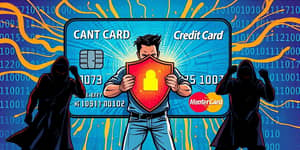
Introducing teens to credit cards is a pivotal step toward fostering lifelong financial independence. When guided properly, young adults can learn to navigate credit responsibly, avoid common pitfalls, and build a solid foundation for their future.
This comprehensive guide equips parents and guardians with the insights and tools needed to teach teens about credit from fundamentals through practical application.
At its core, credit is borrowed money that must be repaid, usually with interest. A credit card represents a revolving line of credit provided by an issuer, complete with a specified borrowing limit.
Unlike debit cards, which immediately withdraw funds from a bank account, credit card purchases are loans that teens must repay. Emphasize that a credit card is not free money but a powerful tool when used wisely.
Habits formed in adolescence often follow teens into adulthood. Establishing responsible credit behavior now can unlock opportunities later.
By understanding the long-term impact of credit scores, teens can see how their choices shape future financial freedom.
Every purchase made on a credit card adds to the card’s balance. If the full amount isn’t paid by the due date, interest begins accruing based on the annual percentage rate (APR). APRs commonly range from 15% to 25%.
Making only the minimum payment each month can dramatically extend payoff periods and inflate total costs due to compounding interest. Consider this real-world example:
Carrying a balance of $500 at 18% APR and making only the minimum payment can take nearly three years to clear and cost an extra $350 in interest alone.
A credit score is a three-digit number (300–850) that summarizes creditworthiness. Scores above 700 are generally considered good for most lending decisions.
Parents can add teens as authorized users by parents or guardians to help build a credit file under supervision. Secured credit cards, which require a deposit, also offer a safe way to establish credit.
Teens should regularly monitor credit reports online to track progress and detect potential identity theft.
Responsible credit use hinges on clear rules and self-discipline:
Impulse spending can trap teens in debt. Guided practice with small, supervised transactions at first helps build confidence without undue risk.
Start by discussing core concepts and real-life scenarios together. Encourage teens to use cash or debit first, then transition to credit cards for small purchases.
Create a joint budget, choose the right card, and outline clear spending limits. Use mobile banking tools and online calculators to demonstrate how interest accumulates with minimum payments versus full balances.
Teens can obtain one free credit report each year from each major bureau (Experian, TransUnion, Equifax) via AnnualCreditReport.com. Reviewing these reports fosters vigilance and responsibility.
Teaching teens about credit cards is more than a financial lesson—it’s an opportunity to instill lifelong values of responsibility, planning, and self-control. By providing clear guidance and real-world practice, parents can help their children build robust credit histories and confident money-management skills.
Empowered with knowledge and support, today’s teens can develop strong financial habits that pave the way for independence, opportunity, and prosperity.
References













